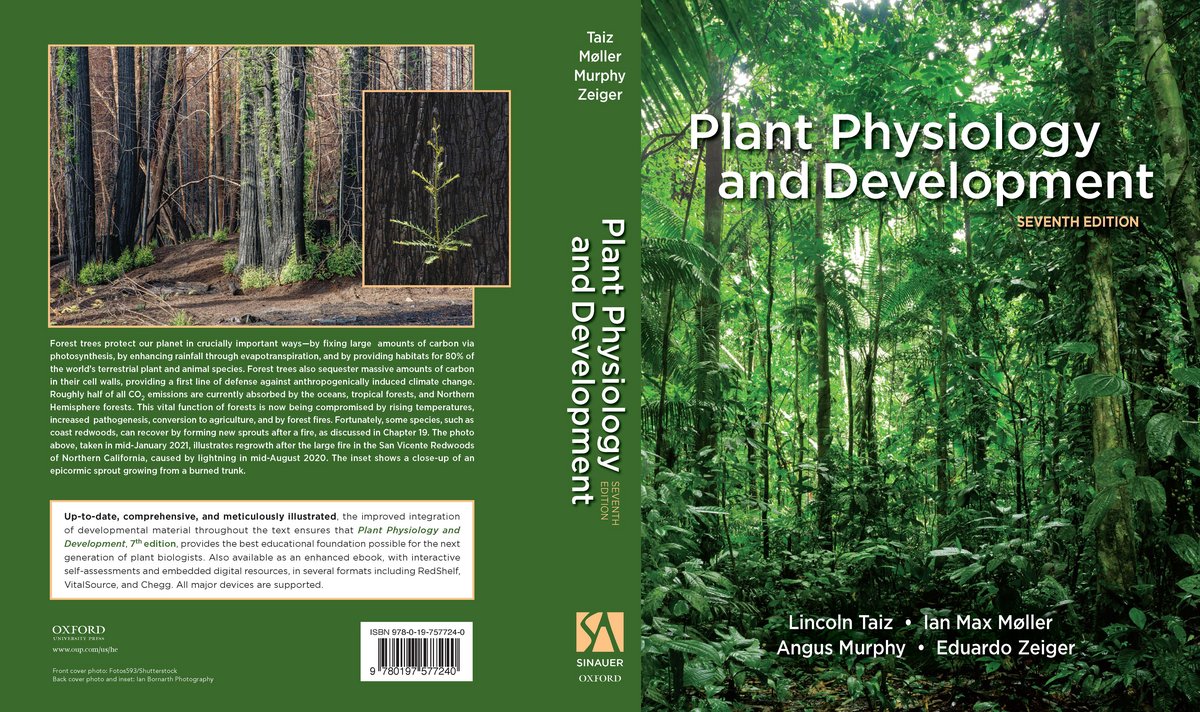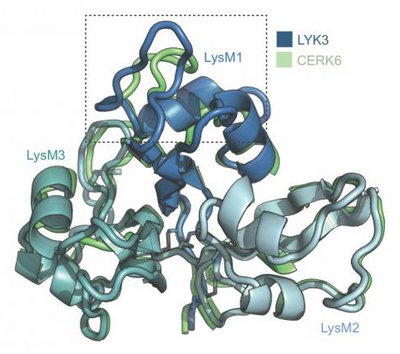Researchers from Aarhus University have now discovered the receptor complex crucial for initiating symbiotic signaling in legume plants that engage in symbiosis with nitrogen-fixing bacteria. In the study published in Science, the researchers describe a novel technique using nanobodies to investigate and activate receptor complexes. Surprisingly, the technique also identified barley receptors with a similar function. This opens a new perspective for more sustainable agri-food systems by engineering root nodule symbiosis into important crops using their own genes.

An international team led by researchers from Aarhus University have discovered how plant receptors recognize specific carbohydrate signaling molecules from their bacterial symbionts. This ability enables the plant to select and accommodate nitrogen-fixing bacteria inside their roots.
![[Translate to English:] gruppefoto](/fileadmin/site_files/mb/nyheder/2021/Forskere_opdager_hvordan_plantereceptorer_verificerer_de_korrekte_symbiotiske_bakterier-674x270_px.jpg)
Researchers from Aarhus University and the Max Planck Institute for Plant Breeding Research in Cologne, Germany have discovered that root commensal bacteria are adapted to their host species, providing them with competitive advantages when applied exogenously and have to invade the existing bacterial community in their native host. This discovery provides clues for how to identify and tailor bacterial inoculants for improving plant growth in a sustainable manner.
Legume plants know their friends from their enemies, and now we know how they do it at the molecular level. Plants recognize beneficial microbes and keep harmful ones out, which is important for healthy plants production and global food security. Scientists have now discovered how legumes use small, well-defined motifs in receptor proteins to read molecular signals produced by both pathogenic and symbiotic microbes. These remarkable findings have enabled the researchers to reprogram immune receptors into symbiotic receptors, which is the first milestone for engineering symbiotic nitrogen-fixing symbiosis into cereal crops.
In the fairy tale "Goldilock and the Three Bears", the girl Goldilock goes to the bears’ house where she finds three bowls of porridge, but only one has the “just right” temperature, and in the same way within biology, you can find the "just right" conditions - called the Goldilocks principle. This is precisely what an international research team has done by demonstrating that in order to get the "just right" amount of signalling for symbiosis in the roots of legumes, a specific enzyme called chitinase (CHIT5) must be present.
Legumes are able to grow in nitrogen-poor soils due to their ability to engage in symbiosis with nitrogen-fixing bacteria. There is a great interest in using the knowledge about this symbiosis, to enable transfer to other non-symbiotic plants. An international research team has come a step further to understanding this complex biological process.
New findings from the study of legumes have identified an unknown role of nitrogen fixation symbiosis on plant root-associated microbiome, which agriculture may benefit from in the future.
An international team of researchers has discovered how legumes are able to tell helpful and harmful invading bacteria apart. The research has implications for improving the understanding of how other plants, animals and humans interact with bacteria in their environment and defend themselves against hostile infections. These findings can have profound implications for both agricultural research and medical science.
NSECURE, a new interdisciplinary project led by Simona Radutoiu at the Department of Molecular Biology and Genetics, Aarhus University, has been awarded DKK 15 million by the Novo Nordisk Foundation. This collaborative project also involves Associate professor Marianne Glasius (Chemistry, Aarhus University), and Professor Rasmus Waagepetersen (Mathematics, Aalborg University) and aims to study sustainable methods to optimise the yield of cereal crops by utilising soil bacteria.

Simona Radutoiu has been appointed Professor of Plant Molecular Biology at the Department of Molecular Biology and Genetics at Aarhus University as of 1 March 2023. Her research focuses on understanding how plant and bacterial genes contribute to the establishment of beneficial plant-microbe interactions at the root-soil interface and how the acquired knowledge can be used for increasing crop resilience and sustainable production systems.
![[Translate to English:] simona](/fileadmin/_processed_/1/7/csm_Simona_Radutoiu_d3b057325e.jpg)
Researchers from the Department of Molecular Biology and Genetics at Aarhus University take part in an international research network, ENSA, which focuses on improving nutrient uptake by plants to reduce the need for fertilizer. The network has just received a total grant of USD 35 million from Bill & Melinda Gates Agricultural Innovations program, of which Aarhus University receives USD 4 million.

Ian Max Møller and Simona Radutoiu from the Department of Molecular Biology and Genetics at Aarhus University help redirect iconic plant science textbook toward solutions-based learning.


Results published in Science from Aarhus University describe how legumes pick up special signalling molecules to distinguish between harmful and beneficial microbes. These results have been nominated by the Danish technical news journal “Ingeniøren” (the Engineer) as being among the five most important results in Denmark in 2020.
Bill Gates recently met with researchers from the Department of Molecular Biology and Genetics at Aarhus University to discuss the sustainable use of biological nitrogen fixation that allows legumes to use atmospheric dinitrogen as a nitrogen source.
New research results show that legume plants selectively regulate access and accommodation of both symbiotic and endophytic bacteria inside root nodule. This provides a solid basis and platform for identification and selection of beneficial endophytic bacteria and highly efficient nitrogen-fixing rhizobia to be used as biofertilisers in sustainable agriculture. Furthermore, these results contribute to the general understanding of the control mechanisms used by eukaryotic organisms to control microbial infection.
Fungal contamination of barley crops can cause reduced yields due to the disease leaf spot. A team of Danish and Scottish researchers will now develop tools to breed resistant varieties of barley and provide an early diagnosis of outbreaks so the disease can be reduced or eliminated. The Danish Council for Strategic Research has just granted Associate Professor Simona Radutoiu DKK 15.2 million for the project.